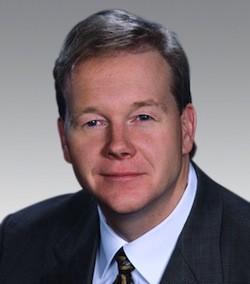The true level of institutional-investor discontent with high-frequency trading on exchanges is a matter of conjecture, but a litmus test of sorts may be on the way.
Just last month, Toronto-based Aequitas Innovations said it would form a new stock exchange to compete with Canadian stalwart TMX Group. “Our business model is about tackling predatory HFT strategies and not being HFT-dependent,” said Jos Schmitt, Aequitas’ chief executive.
Will the Aequitas exchange tap into a latent pool of institutional demand for an HFT-free trading experience and quickly ramp up market share? Or will it be just a curiosity, a fringe competitor that doesn’t eclipse more than a few percentage points of market share? The answer, most likely, will fall somewhere in between best-case and worst-case scenarios.
Aequitas won’t launch until late next year at the earliest, so it is not a near-term competitive threat to TMX. For its part, TMX, which has market share of about 80% in Canadian equities, says it is in tune with the nuances and shifting dynamics of high-frequency trading and how to manage HFT order flow.
“For users of high-performance technology, whether it’s high-frequency traders, broker-dealers, or increasingly the buy side, the debate has shifted,” said Kevan Cowan, group head of equities at TMX. “It is no longer all HFT is bad or all HFT is good, which is the positioning we were seeing one or two years ago. Now, people are saying it is behaviors within different trading and investor segments that have to be examined, and can’t be all painted with the same brush.”

Kevan Cowan, TMX Group
“High speed does not equal abusive,” Cowan told Markets Media. “There are many different segments of the marketplace that might engage in outlier or abusive behavior — whether it’s high-frequency or not, it should be rooted out and enforced against.”
High-frequency trading makes up 15% to 20% of equity trading on TMX’s Toronto Stock Exchange, about one-third comparable levels on major U.S. exchanges. Another difference across regulatory regimes is that the Investment Industry Regulatory Organization of Canada has utilized real-time trading surveillance since 2010, whereas the U.S. Securities and Exchange Commission has only recently implemented similar technology.
IIROC says it is on the case. “As trading technology continues to rapidly evolve, it’s important that regulators examine how it is used, to ensure a level playing field,” said Victoria Pinnington, vice president of trading review and analysis for the self-regulatory body, which oversees all investment dealers and stock and bond trading in Canada.
“IIROC is currently in the midst of a comprehensive study of HFT activity on Canadian equity marketplaces,” Pinnington told Markets Media. “IIROC believes it is important to address identified regulatory concerns relating to HFT based on empirical data and objective analysis. The research will help to inform Canadian market policy direction, and will complement other efforts by IIROC to have appropriate controls in place.”
Beyond HFT
Aequitas has indicated that restricting certain high-frequency trading practices, such as latency arbitrage and ‘ghost’ orders, will be a differentiator and a selling point. “The current market ecosystem has been negatively impacted by eroding investor confidence, predatory high -frequency trading practices, capital-formation issues, and a lack of competition — all of which is detrimental to the best interests of market participants across the spectrum,” Schmitt told Markets Media.
At the same time, the new venture isn’t meant as a one-trick pony. Schmitt said Aequitas will offer “a full-service exchange… focusing on quality listings supported by a strong market-making community, providing innovative solutions to small- and mid-sized companies seeking to raise capital, and helping reduce the financial burden on the dealer community.”
Aequitas will need to compete on traditional exchange offerings, as disquiet about high-frequency trading has diminished, said Renee Colyer, chief executive of consultancy Forefactor. “HFT has found its place in the industry,” Colyer said. “The industry is relatively calm about it, and the proper procedures and regulations have been put in place in order to ensure that the ‘rogue’ high-frequency traders are looked after.”
A new Canadian exchange will need to sell a value proposition to issuers as to why they should list, while building brand equity and confidence, Colyer said. The task is especially difficult because the 150-year-old Toronto Stock Exchange is so closely associated with Canada, plus the Canadian market overall makes up only 3% to 4% of the world’s market capitalization, so it’s not a big pie to cut into.
“The reality is that institutional investors are going to trade where the liquidity is,” said Colyer, who expects it will take Aequitas at least two years to win exchange status. “If HFTs can provide additional liquidity, I would think it would be a good thing to keep this kind of order flow…I don’t know where the liquidity is going to come from.”
TMX is seeing a broader range of market participants deploy what Cowan describes as high-performance trading. “As we see more and more people investing in it, there’s a blending of strategies,” he said. “The technology is more widely dispersed.”
The world’s seventh-largest exchange is in wait-and-see mode regarding its prospective new competitor. “I think we really need to see their proposals to understand more specifically what they’re offering,” Cowan said. “We very much look forward to the public comment process that will go along with that.”
“We welcome innovation if it contributes to the marketplace,” Cowan concluded. “We want to make sure that the core features and principles of the Canadian marketplace that have made our market strong are not undermined.”
